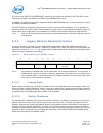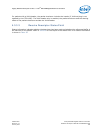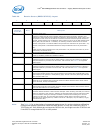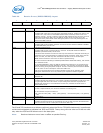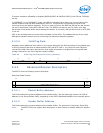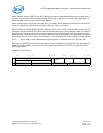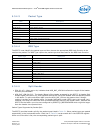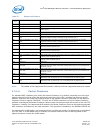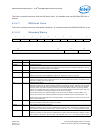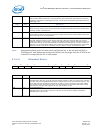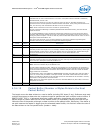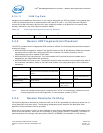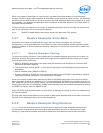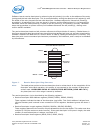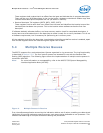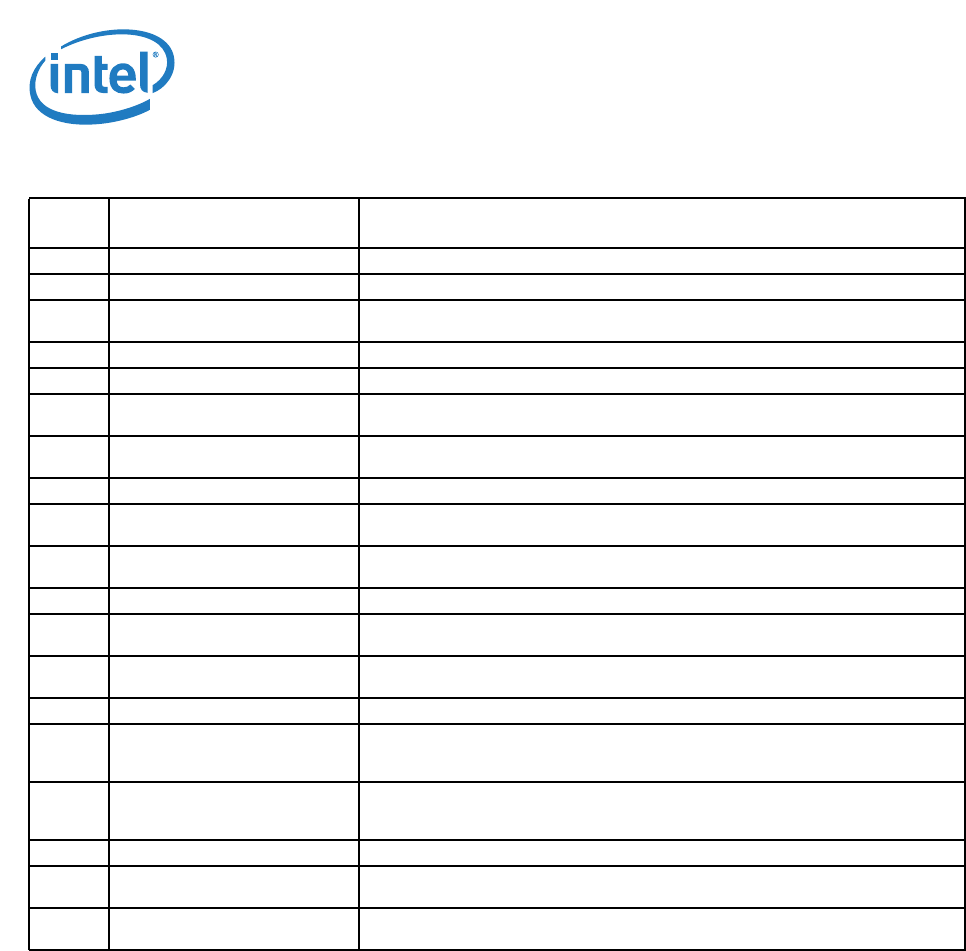
Intel
®
82575EB Gigabit Ethernet Controller — Advanced Receive Descriptors
Intel
®
82575EB Gigabit Ethernet Controller 324632-003
Software Developer’s Manual and EEPROM Guide Revision: 2.1
112 January 2011
Table 31. Supported Packets
Note: The header of the fragmented IPv6 packet is defined until the fragmented extension header.
5.3.4.6 Packet Checksum
For standard 802.3 packets (non-VLAN) the Packet Checksum is by default computed over the entire
packet from the first byte of the DA through the last byte of the CRC, including the Ethernet and IP
headers. Software can modify the starting offset for the packet checksum calculation via the Receive
Checksum Control register (RXCSUM). To verify the TCP/UDP checksum using the Packet Checksum,
software must adjust the Packet Checksum value to back out the bytes that are not part of the true TCP
Checksum. Likewise, for fragmented UDP packets, the Packet Checksum field can be used to accelerate
UDP checksum verification by the host processor. This operation is enabled by the RXCSUM.IPPCSE bit.
For packets with VLAN header, the packet checksum includes the header if VLAN striping is not enabled
by CTRL.VME. If VLAN header strip is enabled, the packet checksum and the starting offset of the
packet checksum exclude the VLAN header.
Packet
Type
Description Header Split
0h MAC, (VLAN/SNAP) No.
1h MAC, (VLAN/SNAP) IPv4 Split header after L3 if packets are fragmented.
2h MAC, (VLAN/SNAP) IPv4, TCP Split header after L4 if packets are not fragmented. Otherwise, treat the packet as
packet type 1.
3h MAC (VLAN/SNAP), IPv4, UDP Split header after L4 if either IPv4 or IPv6 indicates a fragmented packet.
4h MAC (VLAN/SNAP), IPv4, IPv6 Split header after L3 if either IPv4 or IPv6 indicates a fragmented packet
5h MAC (VLAN/SNAP), IPv4, IPv6,
TCP
Split header after L4 if IPv4 is not fragmented and if IPv6 does not include a
fragment extension header. Otherwise, treat as packet type 4
6h MAC (VLAN/SNAP), IPv4, IPv6,
UDP
Split header after L4 if IPv4 is not fragmented and if IPv6 does not include a
fragment extension header. Otherwise, treat as packet type 4.
7h MAC, (VLAN/SNAP) IPv6 Split header after L3 if fragmented packets.
8h MAC, (VLAN/SNAP) IPv6, TCP Split header after L4 if IPv6 does not include a fragment extension header.
Otherwise treat as packet type 7.
9h MAC (VLAN/SNAP), IPv6, UDP Split header after L4 if IPv6 does not include a fragment extension header.
Otherwise treat as packet type 7.
Ah Reserved Reserved.
Bh MAC (VLAN/SNAP), IPv4, TCP,
NFS
Split header after L5 if not fragmented. Otherwise, treat as packet type 1. If not
enabled, treat as packet type 2h.
Ch MAC (VLAN/SNAP), IPv4, UDP,
NFS
Split header after L5 if not fragmented. Otherwise, treat as packet type 1. If not
enabled, treat as packet type 3h.
Dh Reserved Reserved.
Eh MAC (VLAN/SNAP), IPv4, IPv6,
TCP, NFS
Split header after L5 if IPv4 is not fragmented and if IPv6 does not include a
fragment extension header. Otherwise, treat as packet type 4. If not enabled, treat
as packet type 5h.
Fh MAC (VLAN/SNAP), IPv4, IPv6,
UDP, NFS
Split header after L5 if IPv4 is not fragmented and if IPv6 does not include a
fragment extension header. Otherwise, treat as packet type 4. If not enabled, treat
as packet type 6h.
10h Reserved Reserved.
11h MAC (VLAN/SNAP), IPv6, TCP Split header after L5 if IPv6 does not include a fragment extension header.
Otherwise, treat as packet type 7. If not enabled, treat as packet type 8h.
12h MAC (VLAN/SNAP), IPv6, UDP,
NFS
Split header after L5 if IPv6 does not include a fragment extension header.
Otherwise, treat as packet type 7. If not enabled, treat as packet type 9h.



